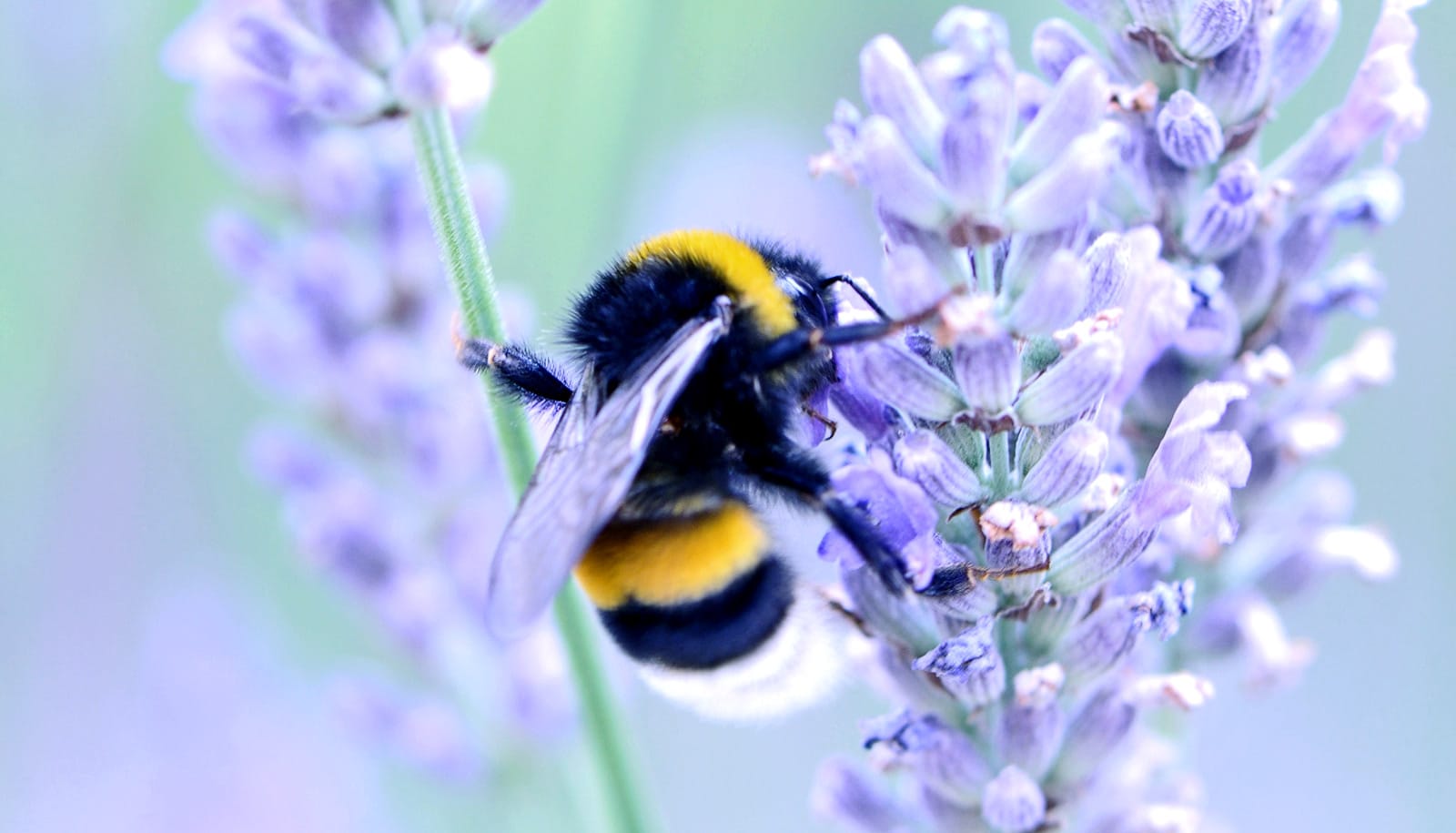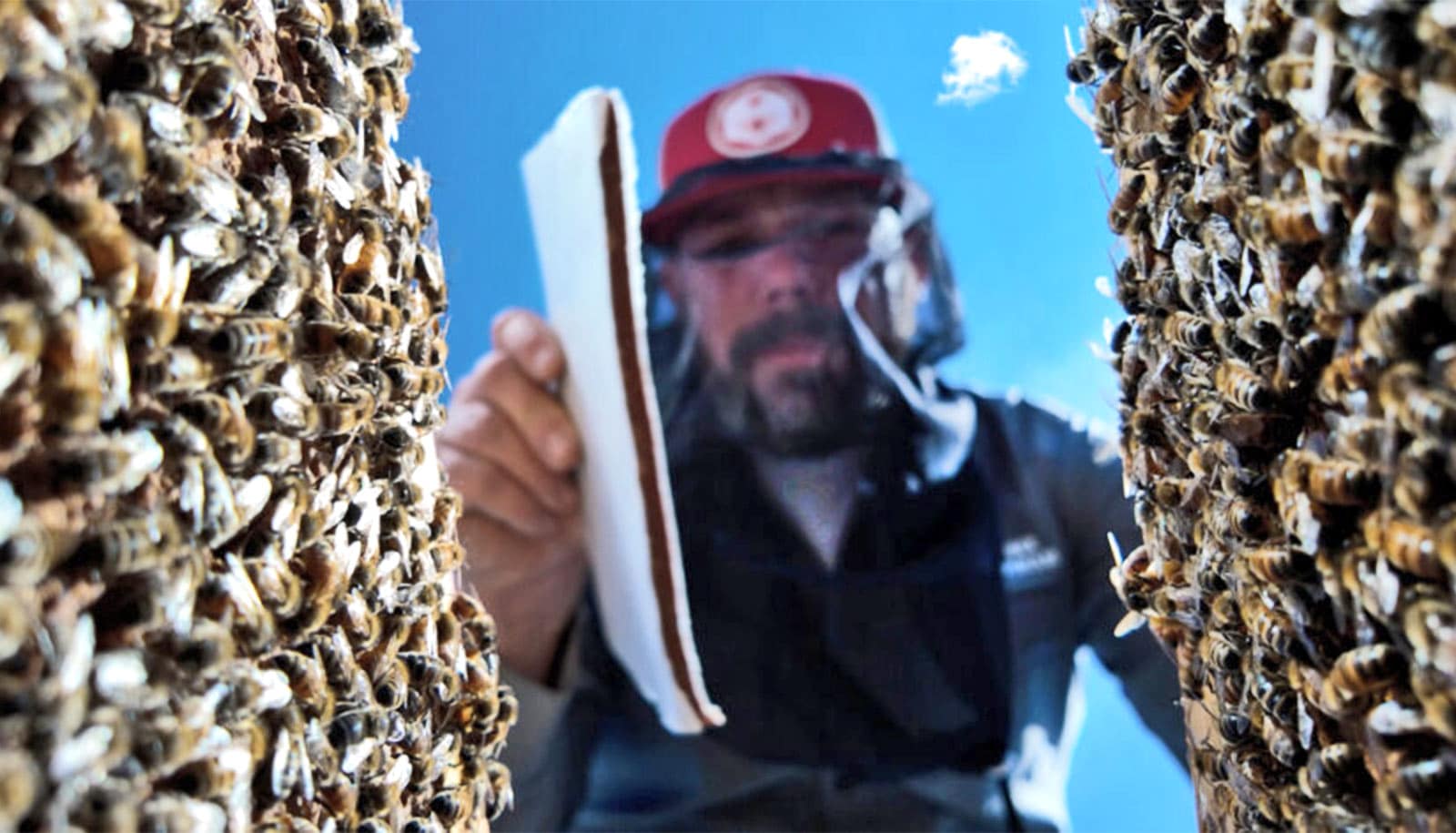Commonly thought to have no impact on insects, fungicides—particularly chlorothalonil, a general-use fungicide often found in bumblebee and honeybee hives—may negatively affect bee health, researchers report.
“…fungicides may not be quite as benign—toward bumblebees—as we once thought…”
The researchers analyzed two dozen environmental factors to understand bumblebee population declines and range contractions, and expected to find stressors like changes in land use, geography, or insecticides. They didn’t expect to find a link between falling bee populations and fungicides.
“Insecticides work; they kill insects. Fungicides have been largely overlooked because they are not targeted for insects, but fungicides may not be quite as benign—toward bumblebees—as we once thought. This surprised us,” says Scott McArt, assistant professor of entomology at Cornell University and the lead author of the new study.
Building on a large data set that Sydney Cameron, professor of entomology at the University of Illinois, collected, the scientists discovered what they call “landscape-scale” connections between fungicide usage, pathogen prevalence, and declines of endangered United States bumblebees.
While fungicides control plant pathogens in crops, the bees pick up their residue when foraging for pollen and nectar. As farms use both insecticides and fungicides, the scientists worry about synergy.
“While most fungicides are relatively nontoxic to bees, many are known to interact synergistically with insecticides, greatly increasing their toxicity to the bees,” McArt says.
Chlorothalonil has been linked to stunted colony growth in bumblebees and an increased vulnerability to Nosema, a fatal gut infection in bumblebees and honeybees.
Wandering pesticides end up in ‘beebread’
“Nosema can be devastating to bumblebees and honeybees,” says McArt. “Since fungicide exposure can increase susceptibility of bees to Nosema, this may be the reason we’re seeing links between fungicide exposure, Nosema prevalence, and bumblebee declines across the United States in this data set.”
For domestic and global agriculture, bumblebees are a key component due to their ability to use “buzz pollination” that vibrates and shakes pollen loose from flowers. In the United States, bees contribute more than $15 billion to the economy and $170 billion to global agribusiness, according to global economic research and a 2012 study.
While half of crop pollination work is done by commercially managed honeybees in the US, the other half is done by bumblebees and wild bees.
McArt and his colleagues will continue to investigate fungicide-insecticide synergisms and fungicide-pathogen interactions under the New York State Pollinator Protection Plan and a new grant from the New York Farm Viability Institute.
Birth outcomes suffer after mom’s heavy pesticide exposure
The researchers report their findings in the journal Proceedings of the Royal Society B.
The US Department of Agriculture and the National Science Foundation funded the research.
Source: Cornell University



